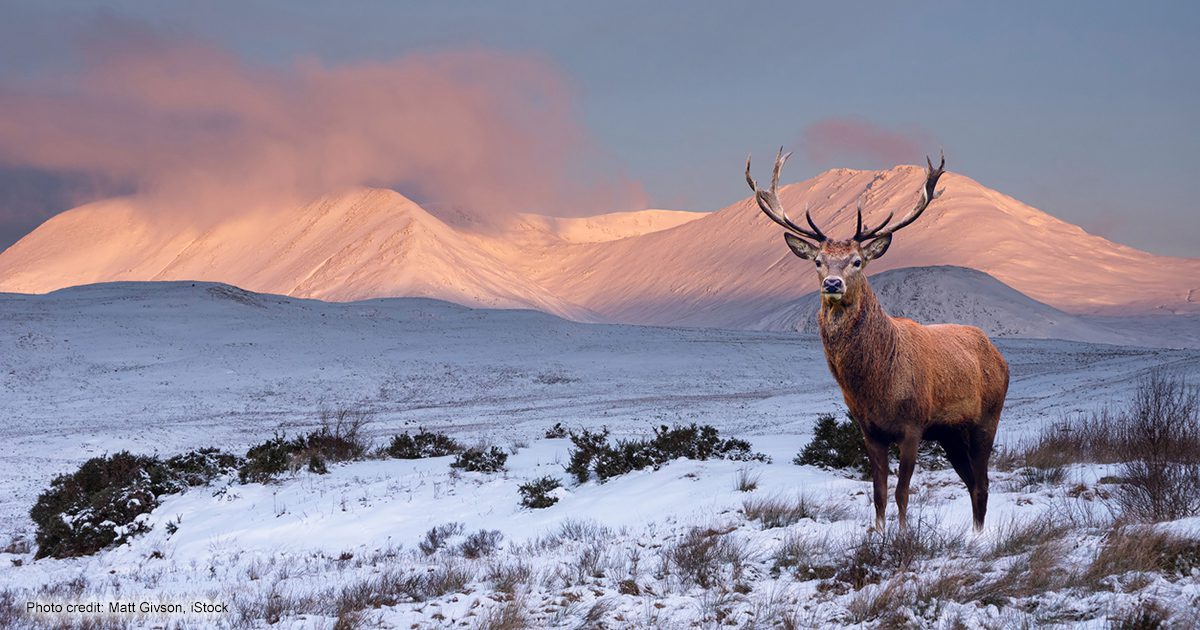
May 16, 2023 Rewilding: Letting Nature Do its Own Thing!
In the 19th century, two American conservation giants held conflicting views on how best to conserve nature. Gifford Pinchot campaigned to save natural areas FOR human use and enjoyment, while John Muir campaigned to preserve nature FROM human exploitation. Pinchot’s legacy includes Yellowstone National Park, whereas Yosemite is the result of Muir’s advocacy. Recently, there has been considerable interest in “rewilding” as a tool in nature conservation, but confusion exists over the concept of rewilding and its essential features.
The concept emerged in North America in the 1980s. It was formalized by Michael Soulé, often called the father of conservation biology, and his colleague Reed Noss in an influential 1998 paper that described the “3Cs” essentials of rewilding – namely, core areas (protecting large areas of wild habitat), corridors (creating wildlife corridors to connect the cores3), and carnivores (reintroducing missing predators). Recent efforts by IUCN’s Rewilding Thematic Group (RTG)1 to expand and clarify the rewilding concept resulted in a “definition and ten guiding principles”.2 This definition goes beyond the original “3Cs.” For example, the principles include reference to the importance of local engagement and support as well as the need to have science, indigenous, and local knowledge and the requirement for a paradigm shift in human-environment relationships.
Rewilding differs from the traditional conservation approach of reintroducing absent or declining species. Rewilding aims to restore ecosystem processes lost because of the local extirpation of species, particularly large carnivores, and to re-establish a self-regulated natural ecosystem that does not need human management.
The reintroduction of wolves to Yellowstone National Park is a classic example of the positive impact of restoring a missing ecosystem link. The presence of wolves has changed elk feeding habits. As a result, tree growth along streams has changed dramatically. When elk could graze the young saplings undisturbed, the riverine tree system could never become established because young saplings would be eaten down to the roots. When those saplings are not subjected to destructive browsing and can grow into larger trees, the beavers return and create new wetland habitats supporting a range of species and increasing Yellowstone biodiversity.
However, rewilding is not restricted to restoring carnivores to natural ecosystems such as Yellowstone National Park.
The “Rewilding Europe” movement was launched in 2011. On its tenth anniversary in 2021, Rewilding Europe stated that it aimed to create “a wilder, better, nature- and climate-positive future.” It celebrated the establishment of 9 rewilding landscapes covering 65 thousand square kilometers (one and half times the area of Switzerland) in its first decade. Financial support, which was relatively flat from 2011 to 2018 at around 2 million euros a year, increased sharply from 2018 to about 7 million euros in 2021. Some of the significant Rewilding Europe projects include the Affric Highlands project in Scotland, stretching from Loch Ness across the Western highlands, a European bison project in the Carpathian Mountains in Romania, and a project to increase populations of Griffon and Cinereous vultures in northern Greece and Bulgaria.
Rewilding Europe is promoting the importance of preserving a full complement of animal species to enhance the capacity of an ecosystem to store carbon and hence have a positive impact on climate change. This approach is referred to as Animating the Carbon Cycle (ACC). Rewilding Britain has also commented on rewilding’s positive effect on climate change. According to their report, if two-thirds of the funds currently spent annually on farm support payments were instead allocated to specifically support the restoration of woodlands, peat bogs, and heathlands, around 12% of current annual UK greenhouse gas emissions would be effectively sequestered.
There may also be a rewilding opportunity in Ukraine. When Ukrainian defenders opened the Irpin River dam in February last year, it flooded 13,000 hectares of former wetlands that had been drained during Soviet times. The flood waters prevented Russian forces from advancing on Kyiv, and a local ecologist is suggesting that the Irpin River should be given the title “Hero River.” The Irpin floodplain was a biodiversity hotspot before the wetlands were drained. It consisted of vast bogs, reedbeds, and marshes full of giant catfish, sturgeon, and many wetland bird species. However, it will take time for the wetland ecosystem to recover, and nothing will likely happen until the Russian invasion ends.
Nevertheless, the achievements of the Rewilding Europe and Rewilding Britain programs indicate that even in densely settled Western Europe, rewilding can be successful, leading to the recovery of charismatic animal populations and thriving, self-regulating ecosystems.
Notes
- “International Union for Conservation of Nature Commission on Ecosystem Management (CEM) mandated a Rewilding Task Force (RTF), now the Rewilding Thematic Group (RTG), to work toward an internationally recognized definition and establishment of a set of universal guiding principles for rewilding.”
- The rewilding definition developed by the Rewilding Task Force (RTF) is as follows: “Rewilding is the process of rebuilding, following major human disturbance, a natural ecosystem by restoring natural processes and the complete or near complete food web at all trophic levels as a self-sustaining and resilient ecosystem with biota that would have been present had the disturbance not occurred. This will involve a paradigm shift in the relationship between humans and nature. The ultimate goal of rewilding is restoring functioning native ecosystems containing the full range of species at all trophic levels while reducing human control and pressures. Rewilded ecosystems should—where possible—be self-sustaining. That is, they require no or minimal management (i.e., natura naturans– nature doing what nature does).”
- WBI’s partner, the Center for Large Landscape Conservation (CLLC), emphasizes the importance of corridors connecting wild areas.


